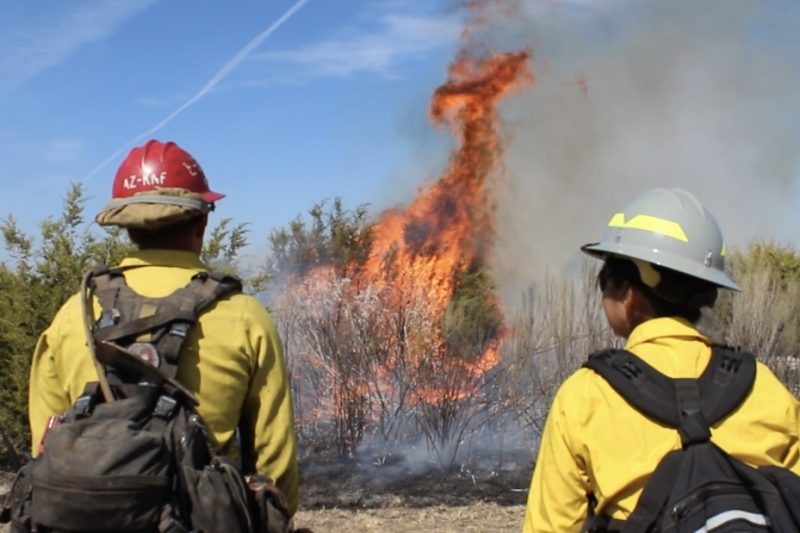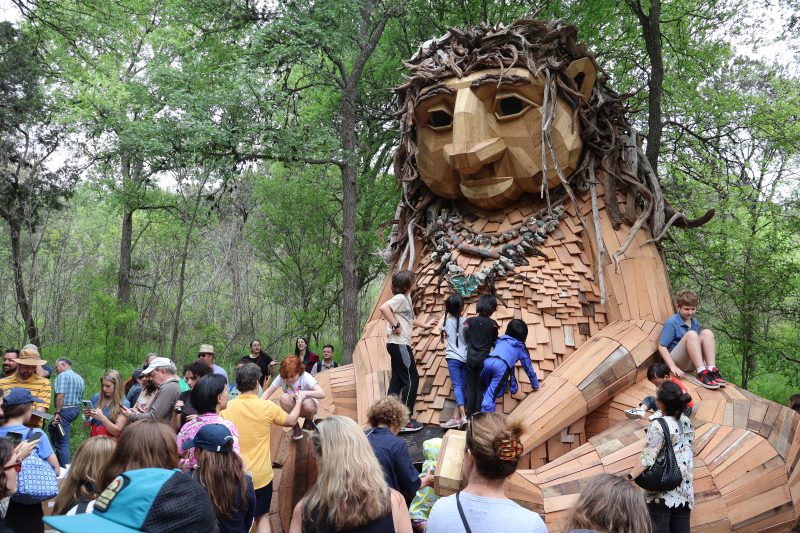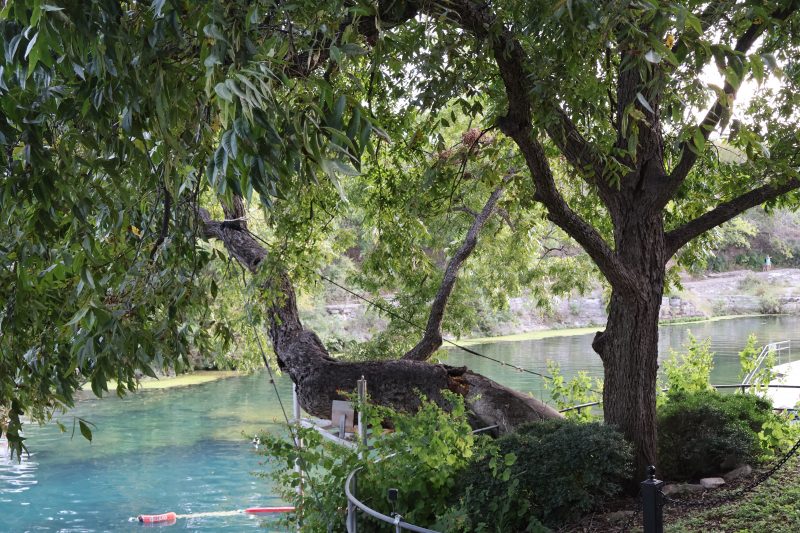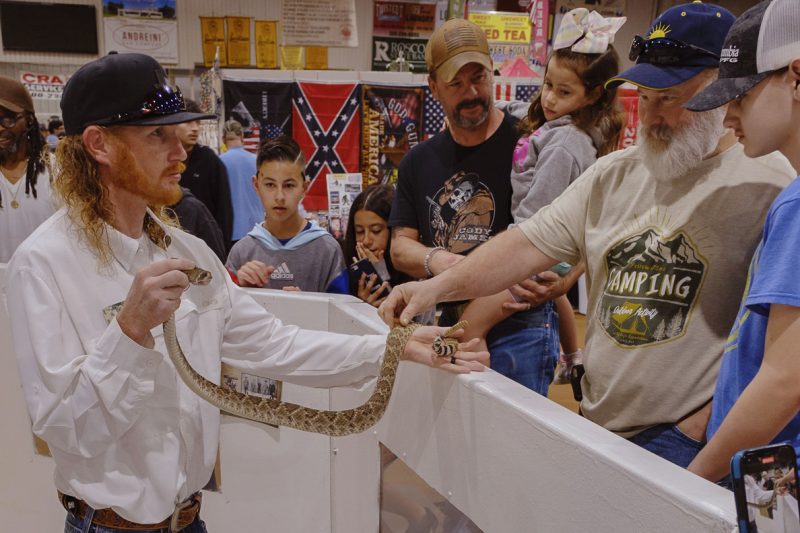


byAngelica Ruzanova
The fire station at Balcones Canyonlands National Wildlife Refuge resembles a cross between military barracks and a dorm room. Dusty cans labeled “dehydrated water,” unlaced boots a few sizes too big, and an untuned guitar clutter the space. Engine Captain Caleb Thyer calls nearby homeowners to issue an important notification. A prescribed burn is planned […]

byIsabella McGovern
The piles of Douglas Fir and cedar sat in Pease Park, waiting to be repurposed into Austin’s newest public artwork. The Douglas Fir had once been a research test tank at the J.J. Pickle Research Campus of the University of Texas. Now it was destined to be an 18-foot troll — and a testament to recycling.
While the trend of making art from recycled materials is not new, Dambo’s troll artwork proved to be a good match for environmentally conscious Austin benefactors.

byIsabella McGovern
As the sun went down over Barton Springs Pool, dozens of people said goodbye to “Flo,” a 120-year-old pecan tree set to be cut down the next day.
“I think of Flo as a symbol of our love for trees and our love for nature and Mother Earth,” Austin arborist Don Gardner told the crowd. “We used to always be a lot more connected to trees than we are now, and I’m so happy to see those who still have some sense of that.”
Flo has leaned over Austin’s spring-fed pool since 1925, but the city’s parks department and tree experts determined it must go because of Kretzschmaria deusta, a root and trunk fungus known as brittle cinder that weakens trees and has no treatment.

bySamantha Eisenmenger
The Sweetwater Rattlesnake Roundup, first held in 1958, began as a rattlesnake hunt with the goal of controlling the snake population in this small northwest Texas town. The event is now billed as the largest rattlesnake roundup in the world.